Shade sail ideas: 10 easy ways to shelter your outdoor space
The latest shade sail ideas offer an affordable yet effective way to cover your patio or deck and protect it from the sun and rain
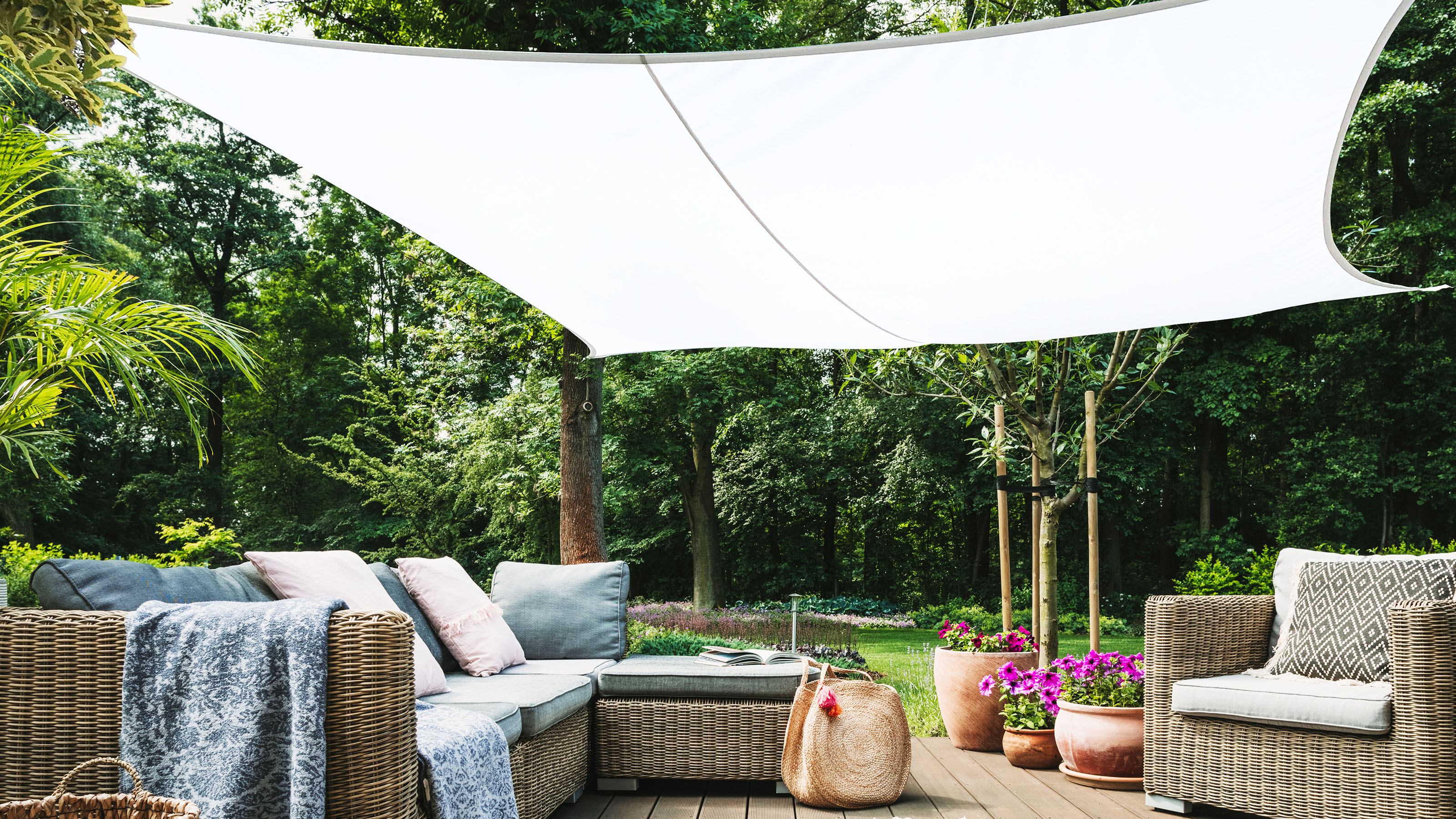

Clever shade sail ideas are the latest way to help you make the most of your outdoor living space in summer. They offer a source of shade and even UV protection, keeping your family safe from the harsh rays during the summer months.
Waterproof shade sails can also protect against showers in rainy weather, allowing you to spend more time outside in comfort. These semi-permanent structures are an excellent addition to any backyard or patio area as they are so easy to install and are available in various designs to suit all individual styles.
Whether you're looking to shelter a compact deck or a larger outdoor dining space, these practical and often budget-friendly designs are one of the most effective shade ideas for patios you can find.
10 quick and easy shade sail ideas for patios and decks
Offering protection from the sun and rain, these innovative shade sail ideas are a great addition to any backyard space.
Quicker and easier to install than more permanent patio covers, they're a cost-effective way to create a more comfortable outdoor living area.
1. Shelter an outdoor living space with a sail shade
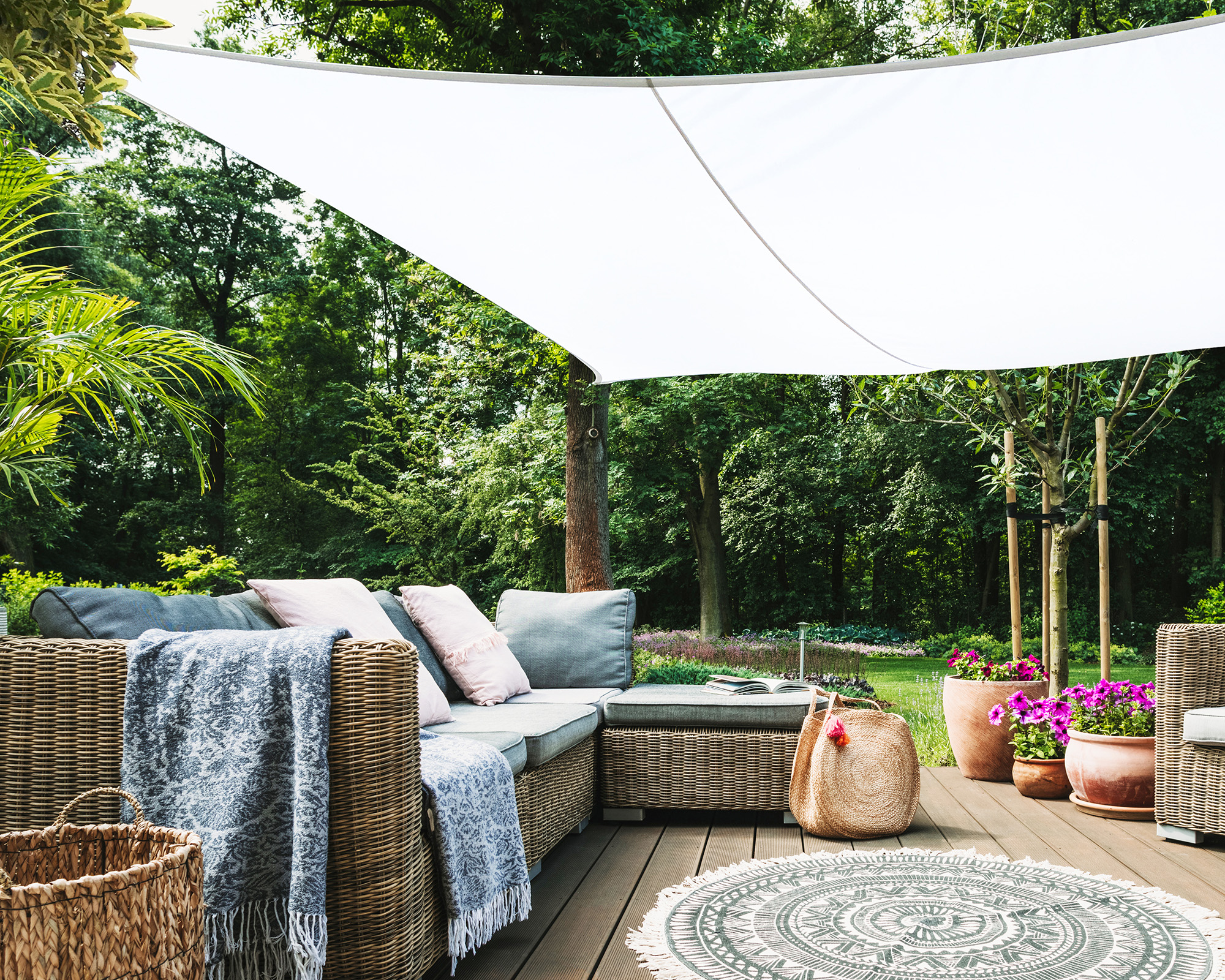
Square UV shade sail from Clara Shade Sails
One of the good things that came out of the pandemic was how we all spent more time in our outdoor space. As a result, we instinctively feathered our outdoor nests with furniture, cushions, rugs and accessories to create the ultimate alfresco living room.
If you're not a fan of gazebo ideas, a sail shade is a great alternative for creating shade where you need it most. Add a large square design overhead and you will have a space that you can enjoy even when the sun is at its hottest and highest, while enhancing the feeling of having an ‘extra room’ outdoors.
2. Shield your interior space from the sun
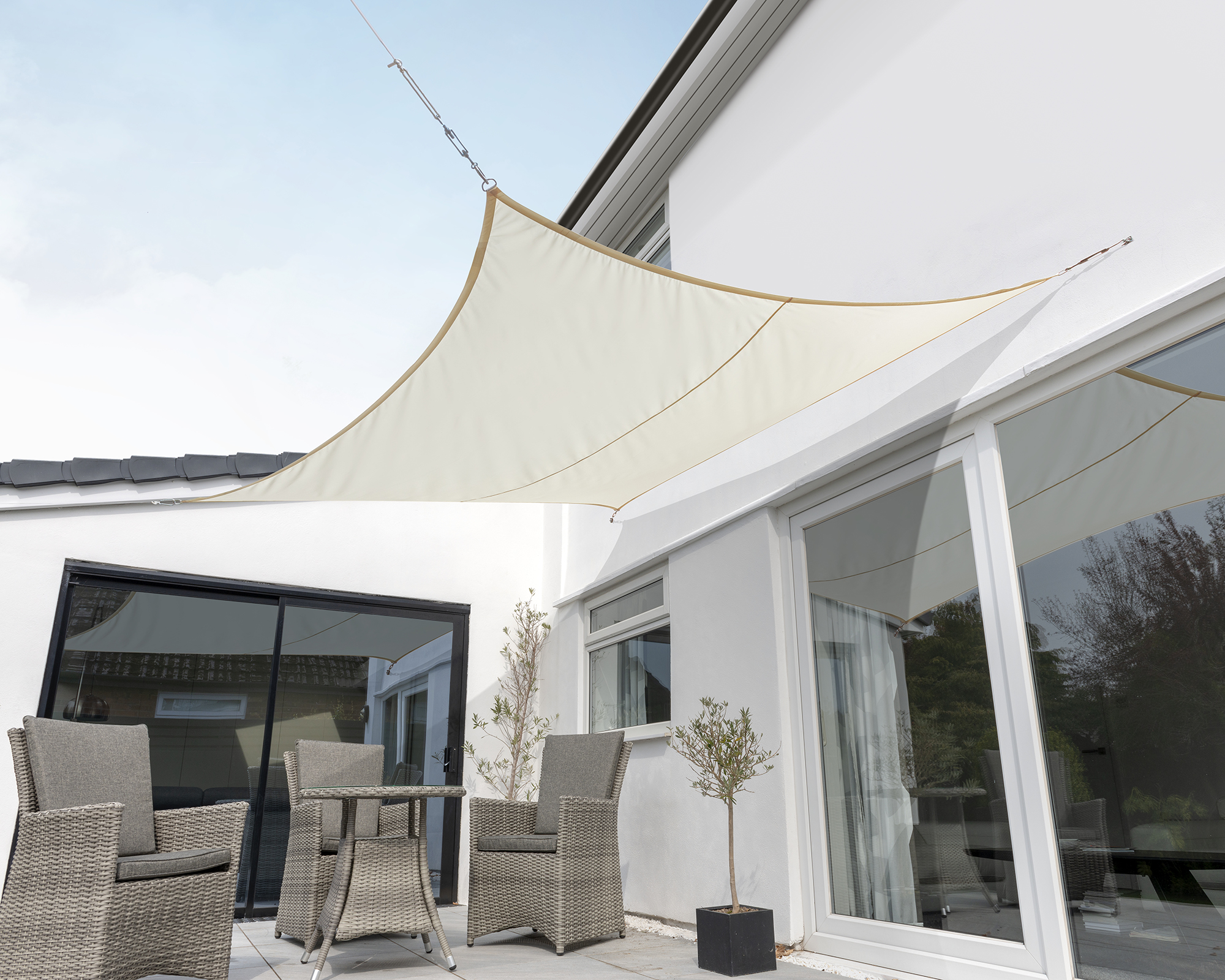
Awning ideas are excellent for gardens that get bathed in sunshine as they provide shade right at the entrance to your property, the ideal location for a dining table. In doing so, this coverage allows you to leave your patio doors open without worrying that your home may overheat.
Their downside is that awnings, much like many pergola ideas, are an expensive purchase, likely to set you back a fair amount. Luckily, you can create a similar set up with an inexpensive rectangular shade sail. Simply attach two fixtures to your exterior wall just above your patio doors, with the other two outer corners attached to nearby poles, trees or adjacent walls.
‘A sail shade can be a more affordable option to an awning,’ says Evie Lane, Gardening Expert at Primrose. ‘And they also provide the benefit of being a more flexible garden addition than a permanent awning structure.’
3. Supersize your sail shade for sun safety
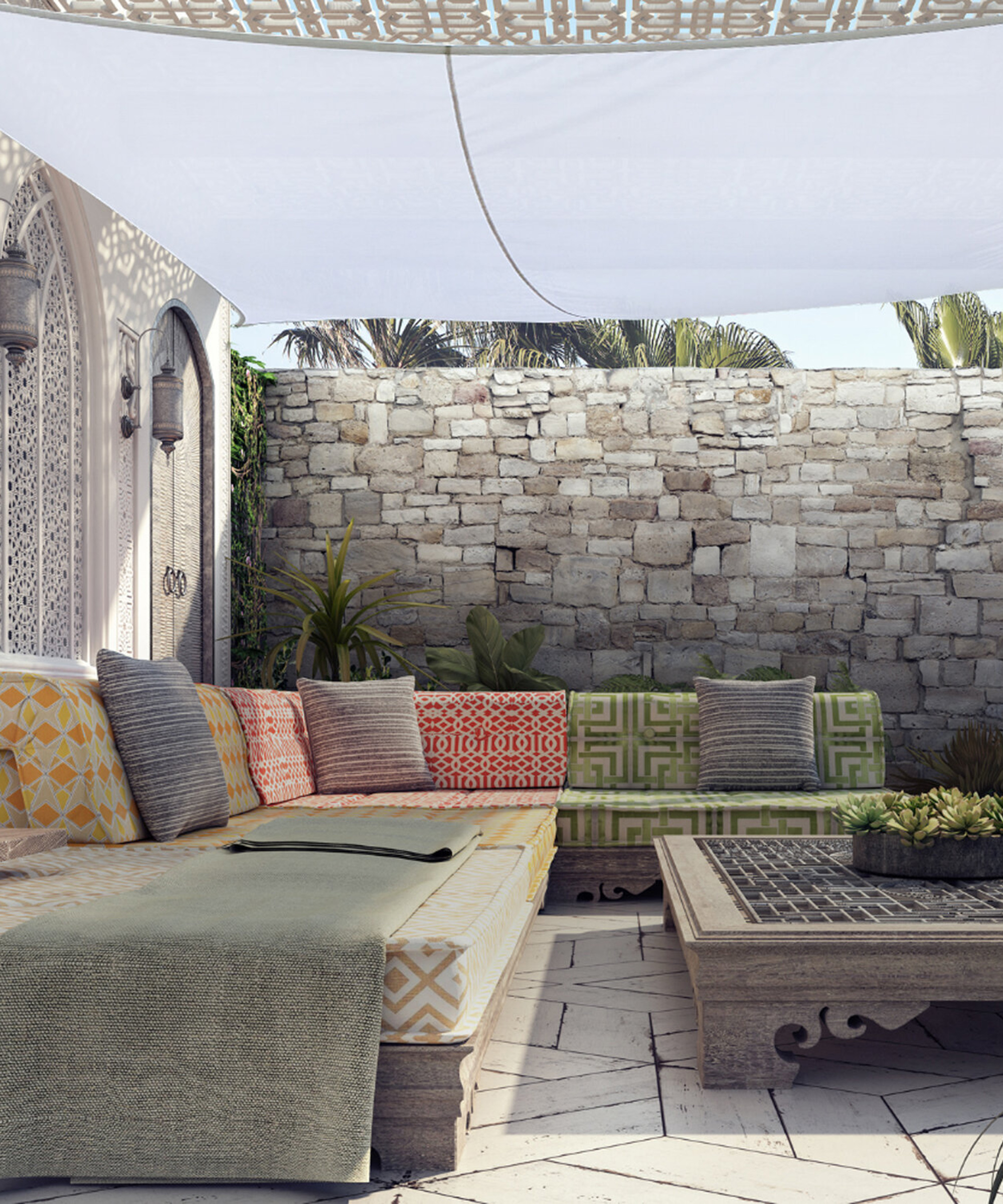
Go for a big design if you want to ensure your patio furniture space stays completely sheltered from the sun. The design pictured from Wayfair offers 98% UV resistance, so you can stay warm alfresco without having to reapply sunscreen every hour.
Alternatively, if you lack the space for a large sail, a mini version will work just as well if you only have a small patio to shade. Small shade sail ideas are a stylish alternative to garden parasols and are just as perfect for sheltering a bistro set.
4. Invest in a semi-permanent shade
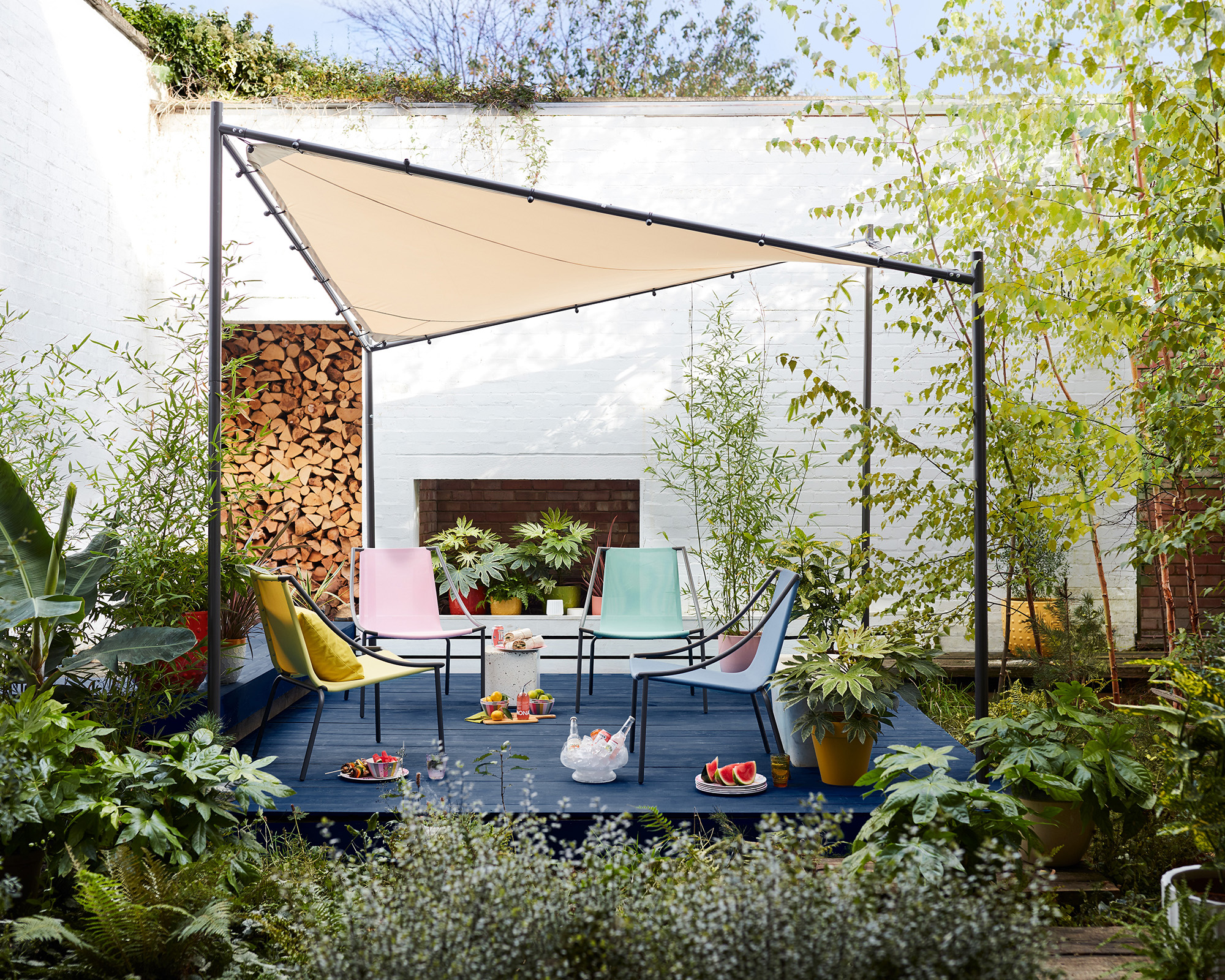
Shade sails are often sold without the fixtures or poles needed to set them up in your garden. Each shade sail set up has different needs depending on your outdoor space, so these can usually be purchased separately from the same company.
This gazebo/shade sail hybrid, however, comes complete with all the fixtures and fittings required to install it freestanding in your garden right away. The rust-resistant frame is made from powder-coated steel and the sail is fixed on in multiple points to ensure a solid and taut shade.
We love how it creates a really simple yet stylish deck cover in this space, drawing attention to the main outdoor seating area in this urban backyard.
5. Try some color overhead
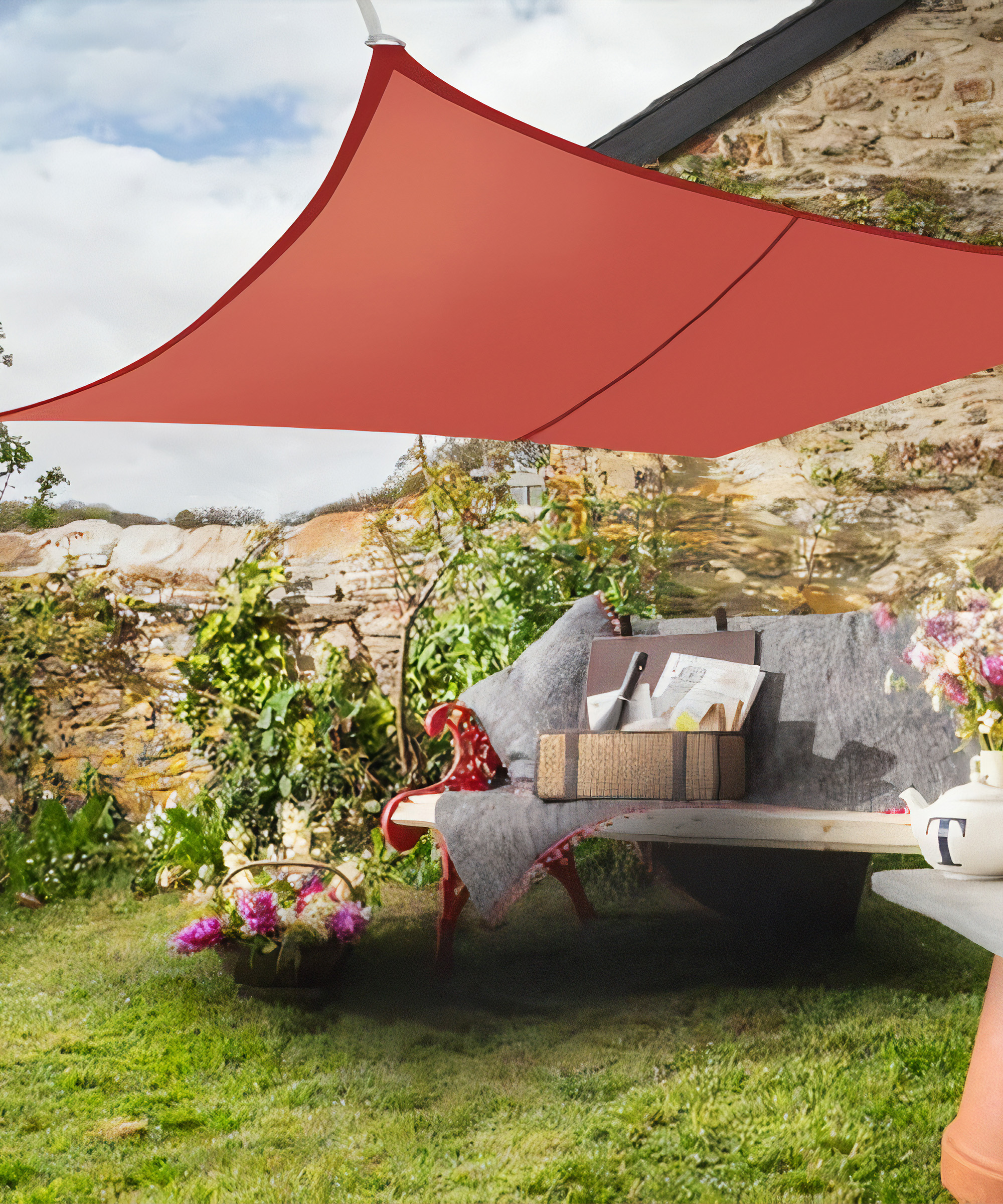
Greenbay Rectangle sun shade sail in Terracotta from ManoMano
While the majority of shade sails tend to be white, they do come in a variety of colors, just like you find with patio umbrella ideas and awnings.
If your garden needs a bit of a style boost whilst being kind to your bank balance, colorful shade sail ideas are perfect for creating a cheap garden shelter with a dash of warmth.
This range from ManoMano comes in a choice of eight colorways, from blue and green to orange and this rich terracotta hue.
6. Shelter while you dine
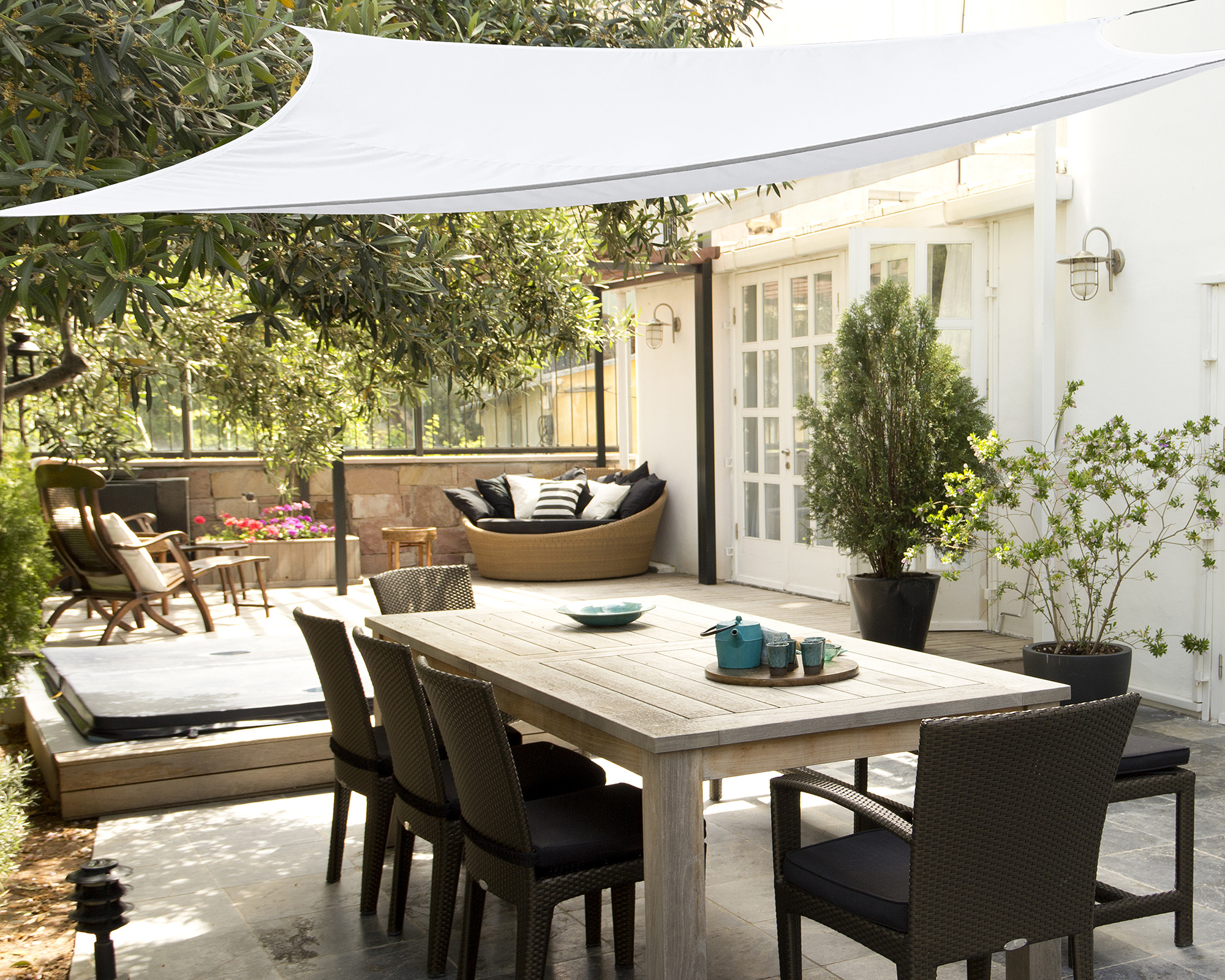
The joy of dining outdoors can be somewhat kerbed if you’re sweating into your salad in the hot sun. Although a pergola can be a wonderful shade-creating addition to an outdoor dining space, if you don't have the time and means to learn how to build a pergola, then a shade sail is a quick and cheap alternative.
Hanging a shade sail overhead means that you and your guests can enjoy the fresh air that outdoor dining affords, without feeling uncomfortable as you eat.
7. Zone a corner with a shade sail
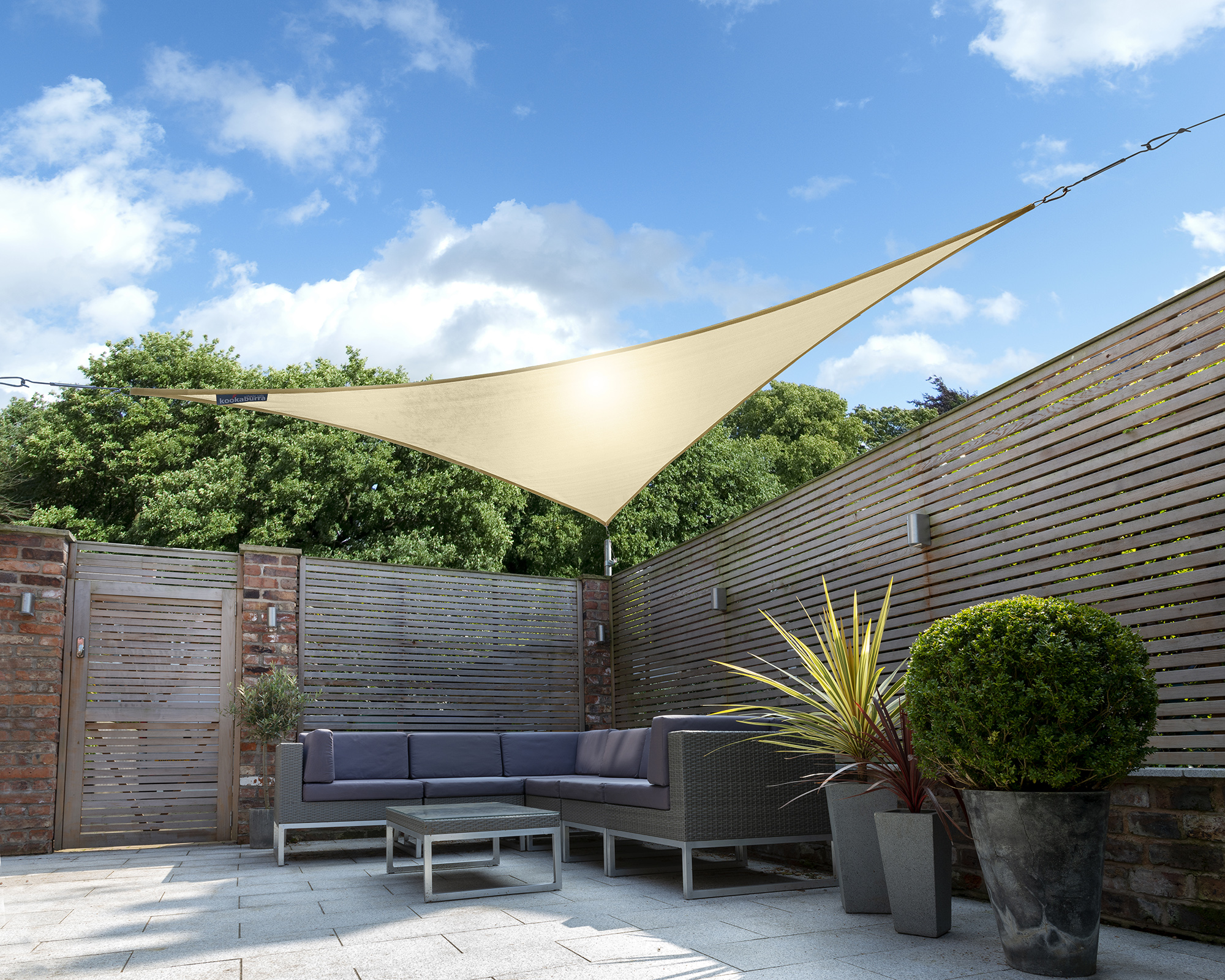
A corner outdoor sofa placed against a garden wall or tall fence is perfectly matched with a triangular shade sail.
Depending on the size and length of your sofa, you may need to choose a triangular design that has two long sides and one short, or an equilateral shape to ensure everyone seated gets the most amount of shade when the sun is at its highest. Secure it to the wall or fence in the corner and to the far edges on the two outer sides.
8. Go small for both sun and shade options
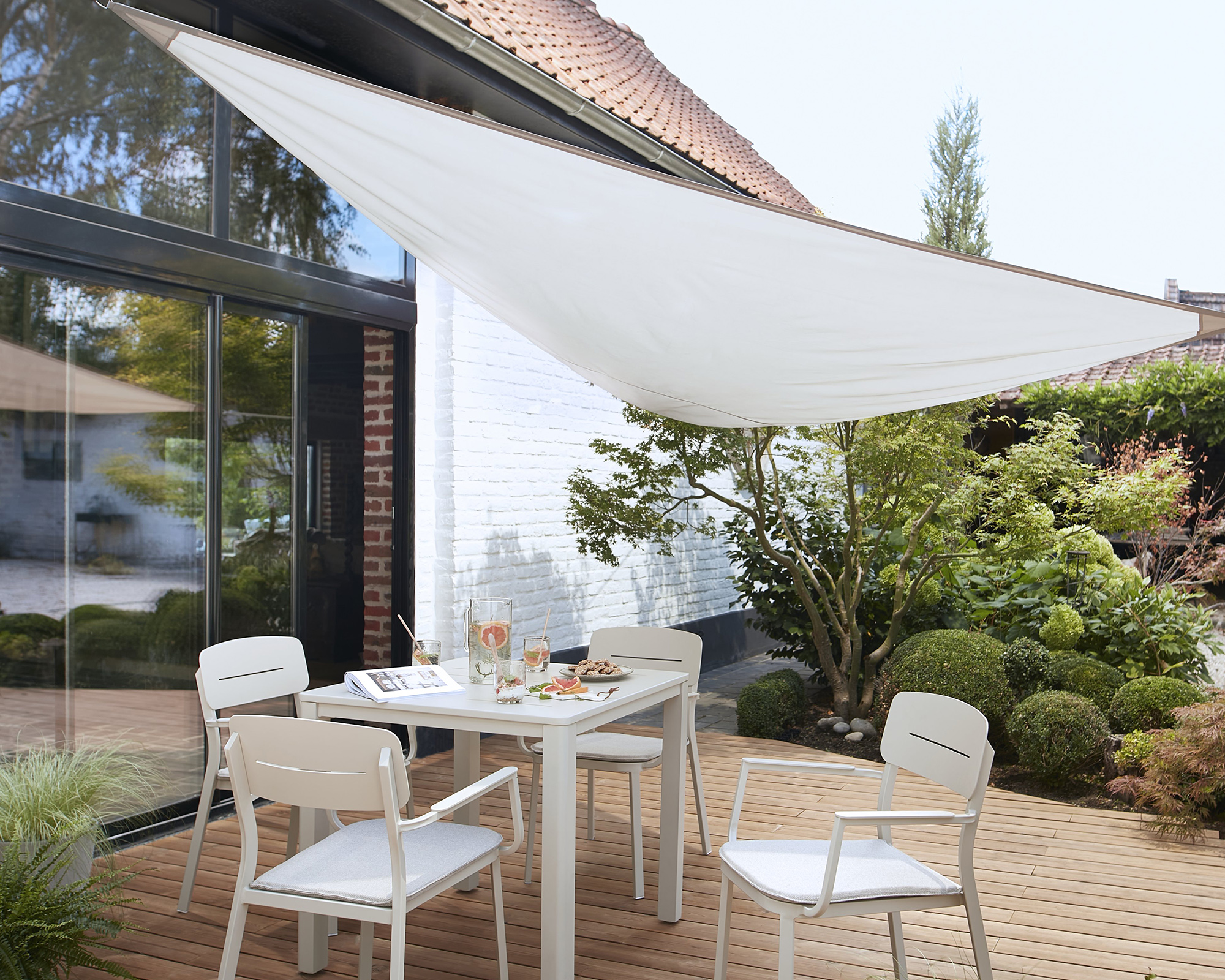
Some people like to be bathed in sunshine, while others prefer to keep cool in the shade.
Give everyone the luxury of both options by hanging a small triangular shade over a square or rectangular seating area. That way, everyone has the option of choosing where they want to sit comfortably.
9. Choose a portable sail shade
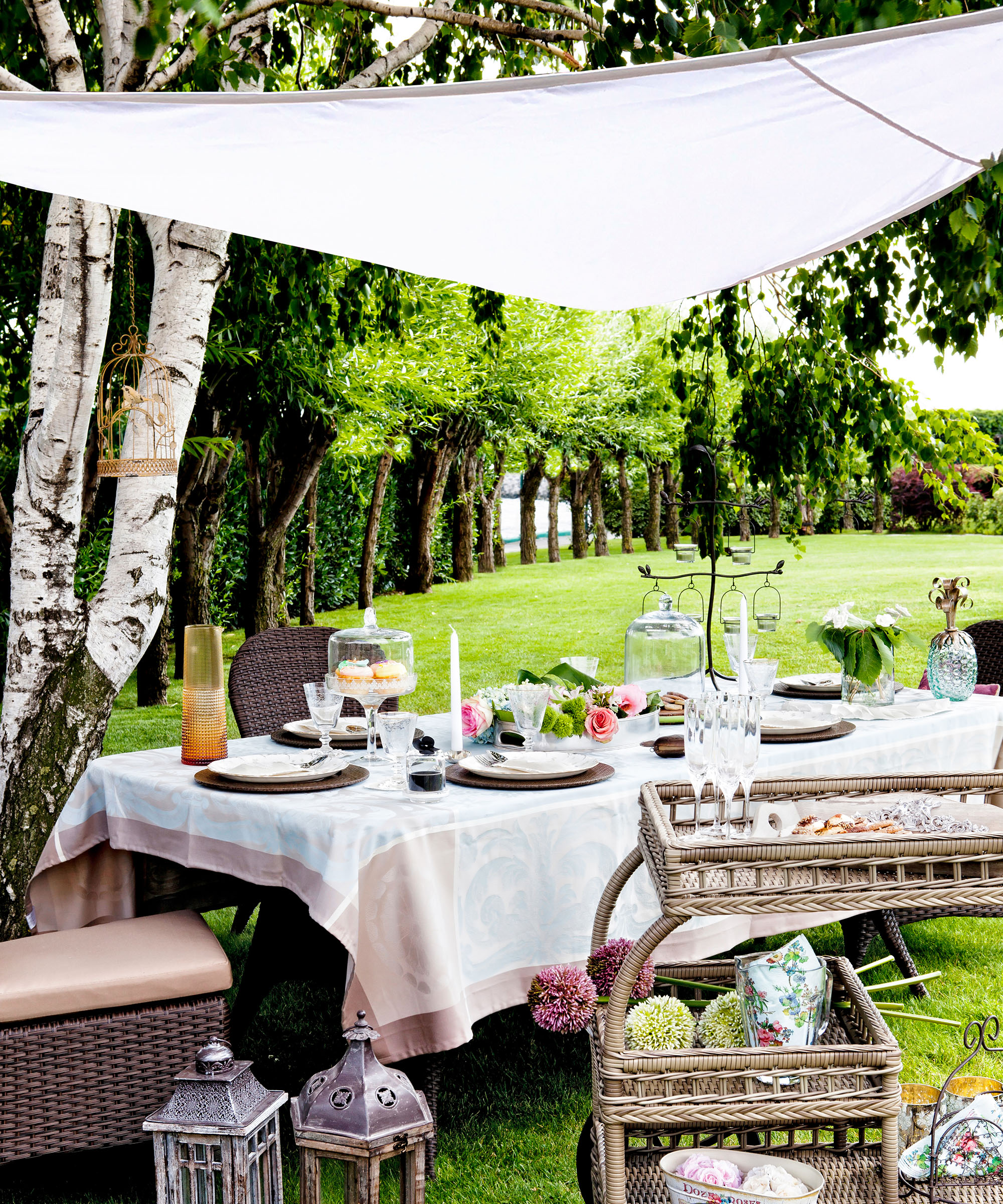
Equilateral Triangle 2m shade sail in White from Clara Shade Sails
One of the issues when going for a picnic or camping is the lack of shade while you relax outdoors. Unlike features such as garden arbors, shade sails are perfectly portable – all you need is a vertical surface or tree and a few lengths of rope to hang the corners from.
What’s more they will also protect you from an unexpected rain shower, too. If the rain does make an appearance, just make sure that you tension your sail fully in order for the rainwater to run off.
10. Color co-ordinate your shade with your space
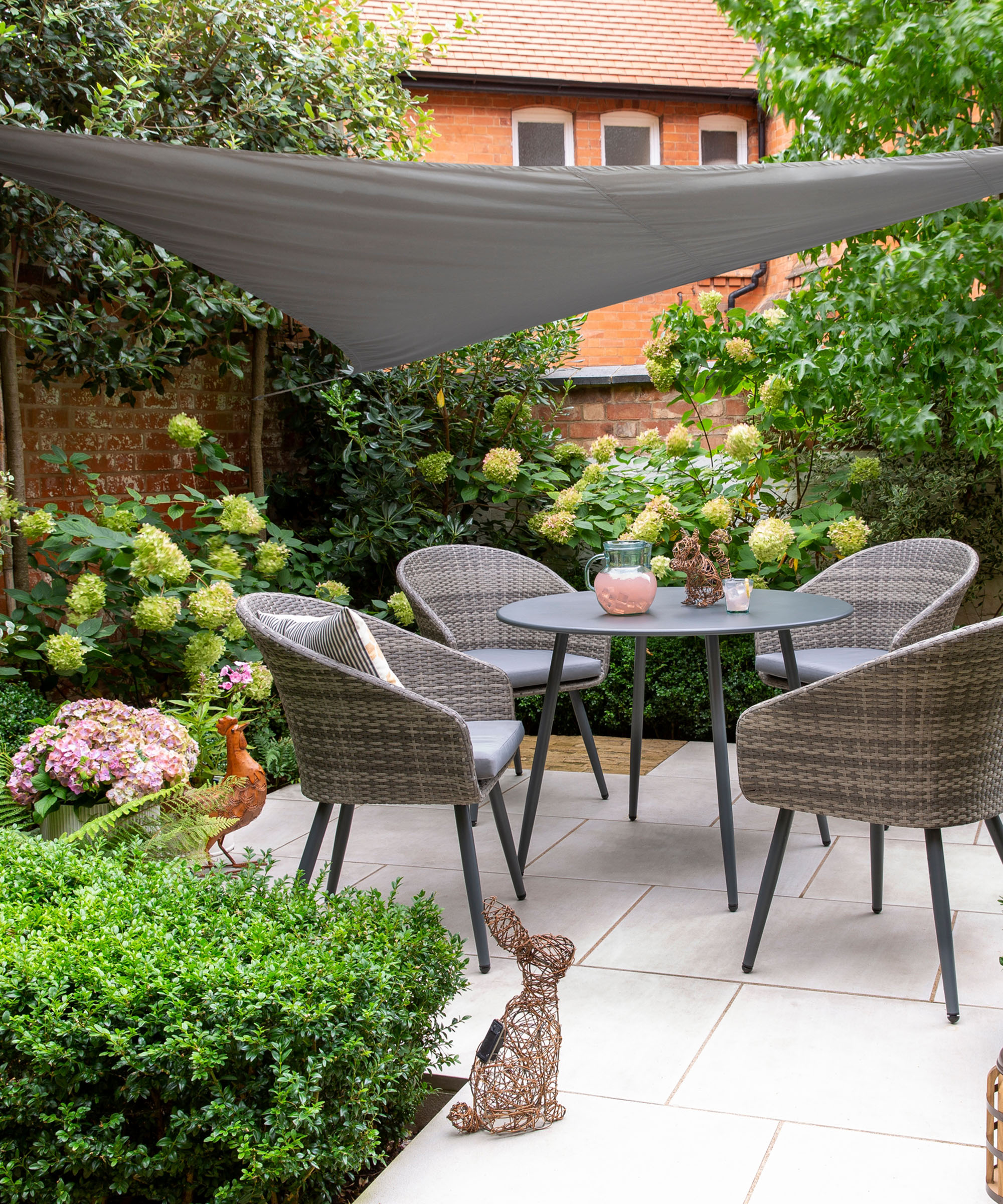
Gray is a neutral shade against which any adjacent greenery looks more vivid. It’s also the ideal hue to choose if you have similarly colored furniture or cushions, making your entire garden color scheme feel more put together and co-ordinated.
Which is the best shade sail design for my space?
Shade sails usually come in a range of shapes - square, rectangle, equilateral triangle and right-angled triangle. ‘There is no size or shape that is any better than the next,’ explains Claire Maclean, Founder Director at Clara Shade Sails. ‘It all depends on the space you are trying to cover, where your fixing points are and how much shade and weather protection you want.'
‘You’ll want to order a shade sail that is slightly smaller than the area you want to cover,’ advises Nadia McCowan Hill, Resident Style Advisor at Wayfair. 'A smaller size prevents the sail from blowing around in windy weather and causing structural damage to the attachment points. When installing the shade sail, you will pull it taut and stretch it as far as possible. It’s key that the material of your shade sail begins 12in (30cm) from your anchor point.’
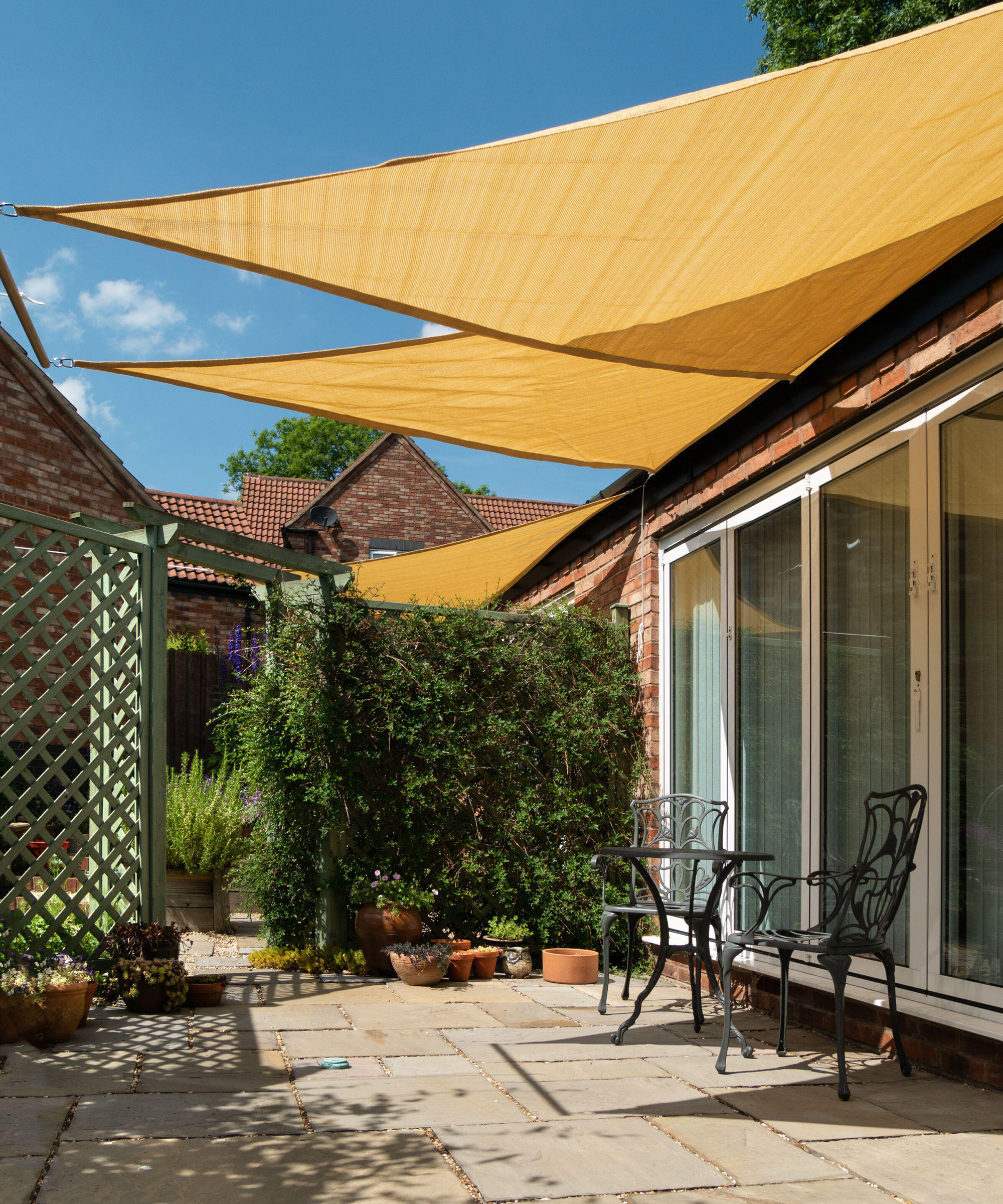
Try multiple shade sales for a large area
What can you use for shade sail posts?
‘Once you've chosen the location for your shade sail that works best,’ says Nadia, ‘you need to determine the attachment points. These can be trees, your house, a fence post, or any sturdy structure such as a pergola.’
How taut should a shade sail be?
‘If you're just wanting a sail to create some temporary shade,’ says Claire Maclean, ‘then many of our customers are happy to just loosely tie their sails. Installing this way achieves more of a billowy look and, particularly with the smaller sails, this can look and work quite nicely in a garden and also inside in a conservatory. '
'If, however, you are intending to use the sail during wet weather or are intending to leave it out as a more permanent addition to your patio ideas then your sail should ideally be pulled very tight. The curved sides allow for this additional tension,' Claire advises.
'One of our customers used the term “tight as a drum” to describe her successful installation. Pulling them taut and installing them on an angle will make sure the water runs off and doesn’t pool or puddle on top.’
Are shade sails good for rain?
‘We recommend that shade sails are taken down during extreme weather such as high winds and very heavy rain, advises Claire Maclean, Founder Director at Clara Shade Sails.
‘If you are intending to use a shade sail during wet weather,’ continues Claire, ‘you must install your sail at an angle of 20-30 degrees, depending on the size of your sail, to allow any rain water to run off.
'Where some posts are higher than others, a diagonal line will be involved which will change the length of your measurement. If square or rectangle, two of the corners will need to be positioned lower than the others, and if a triangle, at least one of the corners. However, if water does collect on top, all is not lost. Just use a broom handle or similar to push from underneath to push the water off the top,’ she says.
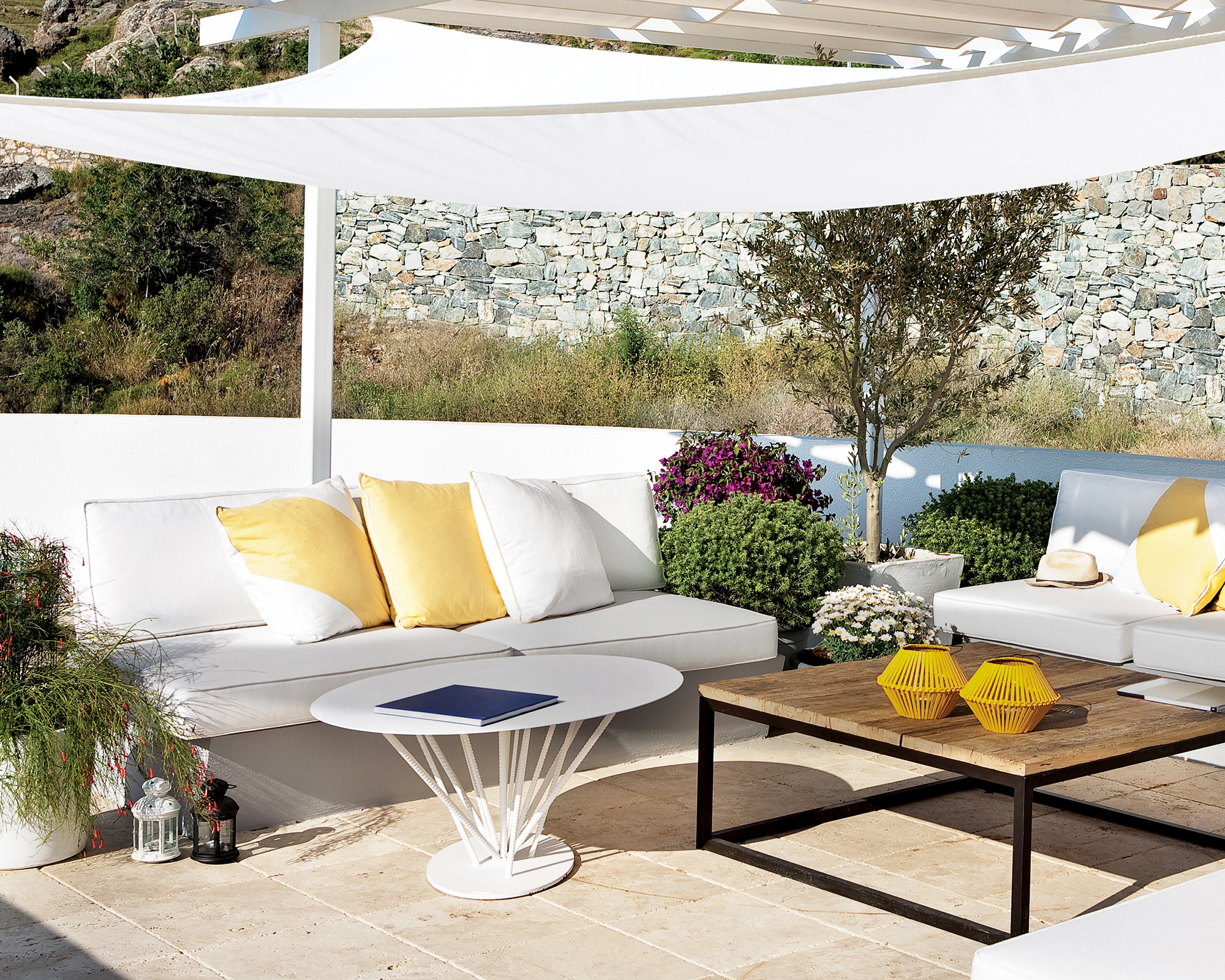
Cool and contemporary shade sails from Clara Shade Sails
Ginevra is the Deputy Editor of Ideal Home magazine but also writes for Gardeningetc whenever possible, as she loves everything about the outdoors. Over the years, she's worked for the majority of Britain’s monthly interiors magazines and their websites, including Homes & Gardens, Livingetc and Country Homes & Interiors. She's written about every area of the home, indoors and out, from shopping and decorating, appliances and home tech, wallpaper and fabric, kitchens and bathrooms, even extensions and conversions.
